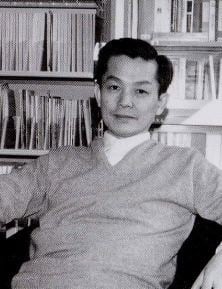Name Reiji Okazaki Role Researcher | Died August 1, 1975 | |
 | ||
Okazaki experiment
Reiji Okazaki (岡崎 令治, Okazaki Reiji, October 8, 1930 – August 1, 1975) was a pioneer Japanese molecular biologist, known for his research on DNA replication and especially for describing the role of Okazaki fragments along with his wife Tsuneko.
Contents
Okazaki was born in Hiroshima, Japan. He graduated in 1953 from Nagoya University, and worked as a professor there after 1963. He died of leukemia (sequelae of Atomic bombings of Hiroshima) in 1975 at the age of 44; he had been heavily irradiated in Hiroshima when the first atomic bomb was dropped. His wife, Tsuneko, won the L'Oréal-UNESCO Awards for Women in Science in 2000 for her work.
Okazaki Fragments
In 1968, Okazaki discovered the way in which the lagging strand of DNA is replicated via fragments, now called Okazaki fragments.
The experiments by his group used E. coli. After introducing 3T-thymidine for only ten seconds to E. coli during DNA replication, he placed the sample in a test tube of alkaline sucrose. The larger, heavier DNA flowed to the bottom of the test tube, while the smaller, lighter DNA did not. When samples were taken from the bottom of the test tube, it was found that half were heavy and half were light, proving that half of the DNA was complete and half was in fragments. Then he took a sample of E. coli DNA that had been synthesized for an additional five seconds, and found all the activity now resulted in the larger molecular weight. Therefore, there were no longer any fragments. This proved that during the five second chase, the RNA primer was removed by DNA polymerase I, and the bases were joined together by DNA ligase, leaving the newly synthesized DNA fully mature and repaired.
